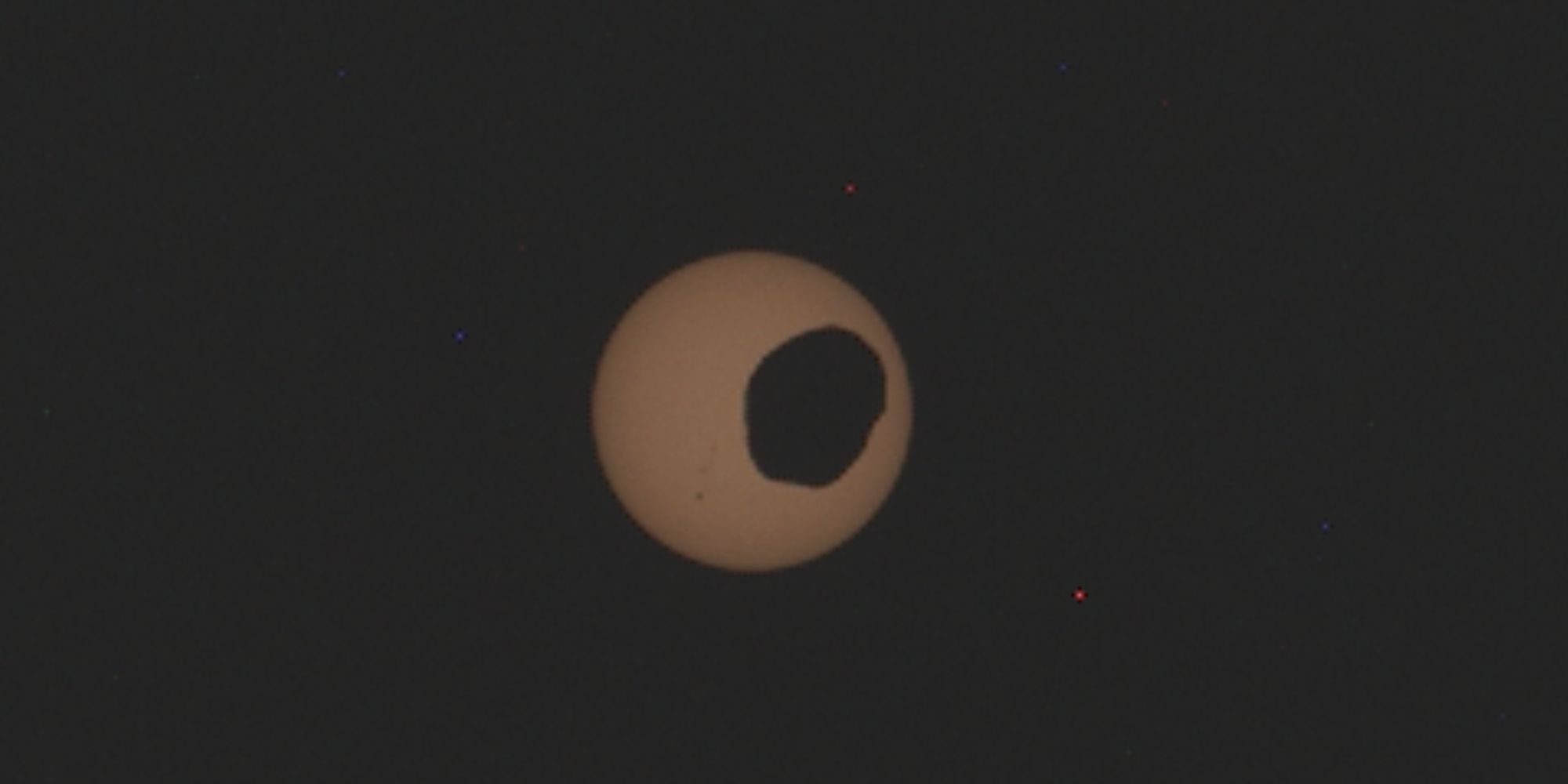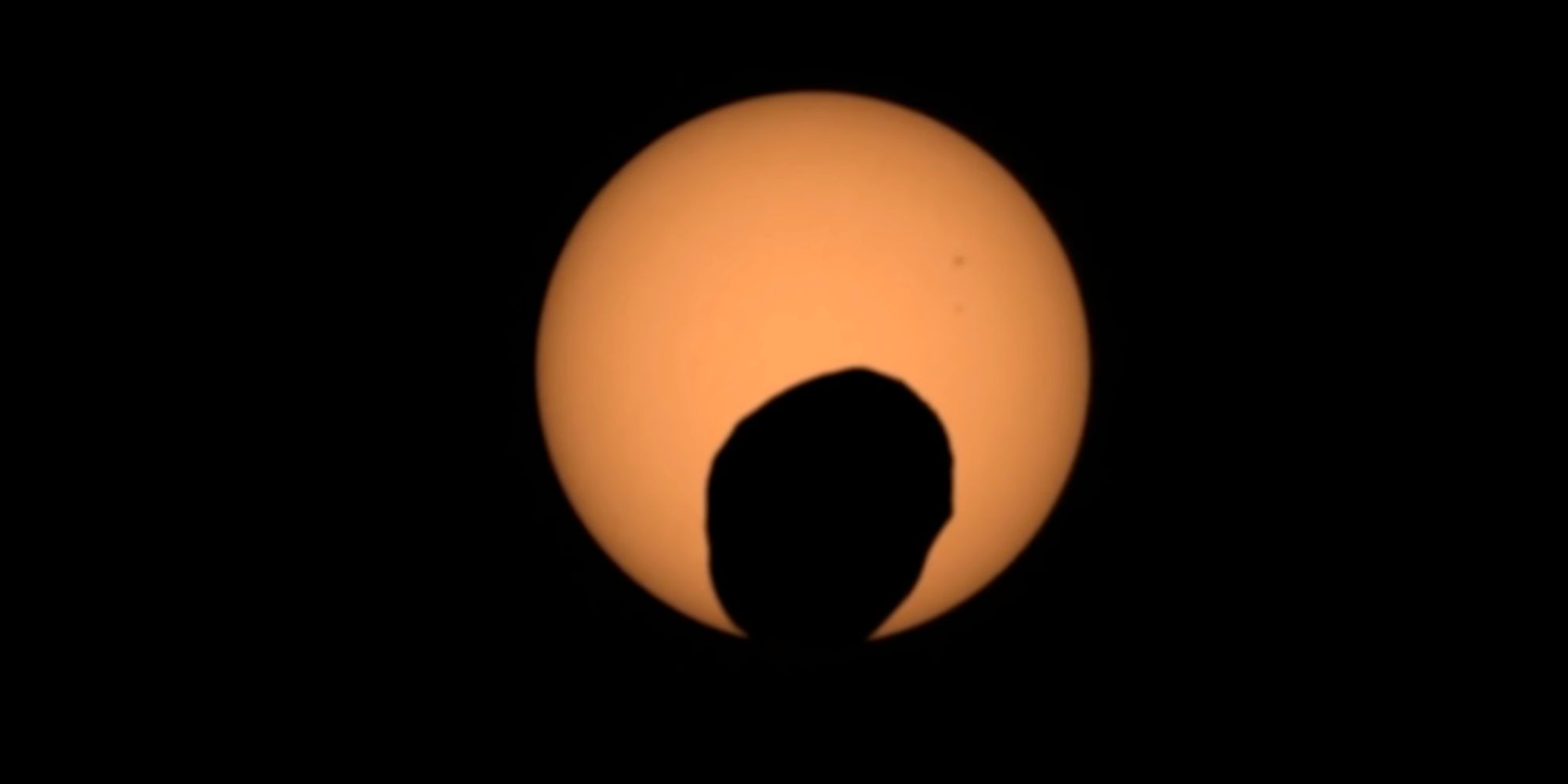Solar eclipses are beautiful events on Earth — but what does a solar eclipse look like on Mars? While most of us may never see one with our own eyes, NASA's Perseverance rover recorded one in impeccable detail. When it landed on Mars in February 2021, Perseverance was tasked with a simple (yet challenging) goal: Collect Martian rock samples that may contain evidence of ancient life. While it'll be years before any possible lifeforms are confirmed, the rover's already gathered eight samples and is on track to get more.
When it's not coring Mars rocks for new samples, Perseverance spends much of its time photographing its surroundings. And unsurprisingly, that's resulted in some truly jaw-dropping discoveries. Perseverance has shared photos of Martian sunrises and sunsets, massive mountains, oddly-shaped rocks, and ominous hills of rolling sand. It's like having a front-row seat to the Red Planet without needing to leave Earth, and it's been nothing short of impressive.
Somehow, Perseverance keeps one-upping itself the more time it spends on Mars. On April 2, NASA acquired dozens of new photos from Perseverance — all showing a solar eclipse happening on Mars. The picture above is one of the rover's best shots, clearly showing Mars' Phobos moon in front of the Sun. It's a fantastic view of how distant the Sun looks from Mars, and reinforces just how tiny Phobos is. While a solar eclipse on Earth can see the Moon blocking nearly the entire Sun, Phobos looks like a tiny speck flying in front of it.
Watch The Mars Solar Eclipse In This Video
In addition to the dozens of still pictures, NASA also captured a video of the Martian solar eclipse. It's one thing to see a single image of Phobos in front of the Sun, but to see it actually moving past it is all the more amazing. The 49-second clip shows Phobos beginning its journey across the Sun from the top right corner. It slowly makes its way down and towards the left, eventually moving out of view to complete the rest of its orbit. What's also fascinating is that the video shows the Mars solar eclipse in real-time. Since Phobos is around 157x smaller than our own Moon, the solar eclipse is significantly shorter than what we're used to on Earth.
And we aren't the only ones impressed with the video. Commenting on the clip, Perseverance camera operator Rachel Howson said, "I knew it was going to be good, but I didn’t expect it to be this amazing. It feels like a birthday or holiday when they arrive. You know what’s coming, but there is still an element of surprise when you get to see the final product."
As with all things Perseverance does, these photos and videos also hold scientific importance. Phobos is expected to crash into Mars' surface within tens of millions of years. Studying an eclipse so clearly lets scientists better understand the moon's activity and its gradual decline towards destruction. And beyond the scientific importance, it's also an incredible technical achievement. If you told someone a few years ago that you could watch a solar eclipse on Mars exactly as it happened, they would have called you crazy. Thanks to Perseverance and the team at NASA, that's the world we now live in. And it's pretty amazing.


